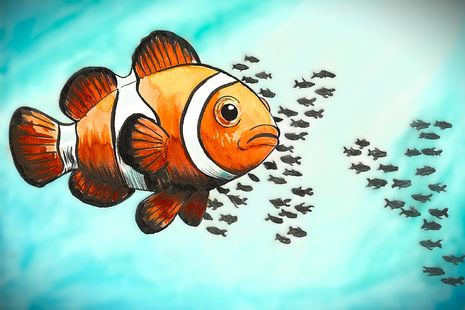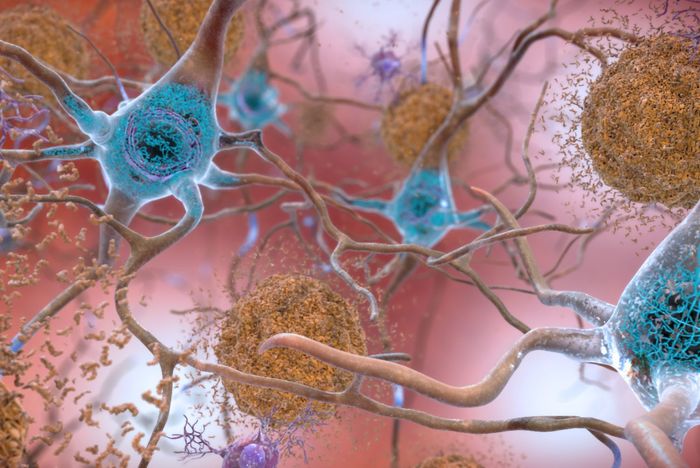Is the gender binary really ‘basic biology’?
How human ideas about gender influence the way we describe the natural world

“There can’t be more than two genders - that’s just basic biology,” is an argument frequently levied against nonbinary and transgender people, in attempts to dismiss suggestions of gender diversity. But with so many exceptions to the two categories of ‘male’ and ‘female’, the reality of biology paints a far more nuanced picture of gender and sex than what certain commentators might claim. Living in a society defined by the gender binary has shaped our observations of the natural world and introduced biases into scientific objectivity – the gender or sex binary may not be a fact of nature, but rather a human concept we have applied to the natural world to understand it better.
In bees, for example, sex differentiation of larvae into queen, worker, or drone is based on an interplay of environmental and genetic factors. The diet given to biologically female bee larvae interacts with the sex determination pathway, dictating whether the gonads (sex organs) will develop or not to produce either a queen or worker bee.
From our limited human perspective, ‘queen’ and ‘worker’ have been described as castes within the sex of female. But to an outside observer without the biases of a gender binary, it might well seem more appropriate to describe three bee sexes: one with ‘female’ gonads, one with ‘male’ gonads, and one with undeveloped gonads.
“The gender or sex binary may not be a fact of nature, but rather a human concept we have applied to the natural world to understand it better”
Additionally, the chromosomal differences between bee sexes make them even more disparate from the human ‘male’ and ‘female’. One simple view states that sex is determined by the chromosomes we inherit from our parents: human females inherit one X chromosome from each parent, giving them the chromosomal composition ‘XX’, while human males inherit an X chromosome from their mother and a Y chromosome from their father, making them ‘XY’. Thus, the paternal sex chromosome inherited (either X or Y) determines the chromosomal sex of an individual.
In contrast, chromosomal sex in bees depends on whether an egg is fertilised or not. An unfertilised egg will have one set of chromosomes from the queen: left alone, this egg will develop into a male bee or drone. On the other hand, if fertilisation of the egg via sperm from a drone has occurred, the embryo will acquire another set of chromosomes, meaning it will then have two copies of each chromosome and develop into a female: either a queen or a worker bee.
So, male bees have one copy of each chromosome, while female bees have two copies. Is the word ‘male’ really a useful category for both XY humans who produce sperm and bees with only one copy of genes? Is it fair to describe both XX humans who produce eggs and sterile worker bees as female? Can the concepts we have developed from observing humans generalise onto animals with such alien biology?
“To an outside observer without the biases of a gender binary, it might well seem more appropriate to describe three bee sexes”
Even within vertebrates, sex is both less binary and more plastic than our vocabulary would suggest. The popular example of clownfish demonstrates how, even in animals other than humans, sex characteristics may change in the course of a normal life. In non-human animals, this is known as sequential hermaphroditism: when an organism possesses both male and female gonads at different points in its life.
Within the rigid hierarchy of clownfish social life, the disappearance or death of a dominant female disrupts the stability of a social group; so the largest male will rapidly undergo sex reversal to take her place. Along with gonadal differences, this transitioning clownfish also experiences behavioural changes to fulfil the role of the dominant female, maintaining the existing social structure. Thus, plasticity in sex characteristics can be not only a natural facet of animal life but also confer a selective advantage, increasing the clownfish’s chances of survival and reproduction.
The term ‘binary’ suggests two distinct groups, such as the 1s and 0s of computer code. However, across the animal kingdom, the definitions of male and female are not so neat. Even among humans, sex characteristics exist across a spectrum of hormone levels and body hair.
Considering the diversity of human biology and prevalence of intersex phenotypes, it would be reductive to define sex solely as reproductive capacity. Countless individuals are born with chromosome types or reproductive organs that don’t fit the simplified norm of XX women and XY men. There is no level of oestrogen that makes a woman, or level of testosterone that makes a man, and so the definitions of ‘male’ and ‘female’ remain ever so slightly ambiguous.
In a world politicising identity and biology, it is important to remember that biology is descriptive, not prescriptive, and nature will always break the rules we use to define it. Of course, the categories of ‘male’ and ‘female’ are undeniably useful to biologists seeking to describe reproductive and social behaviours of the animals they study. However, this simplistic view of the gender binary shouldn’t limit our appreciation of the continuum that is biological sex. So, maybe the gender binary is basic biology – in the sense that it fits neatly within a high school understanding of the differences between men and women, ignoring the truth of gender diversity in the natural world.
 News / Cambridge students accused of ‘gleeful’ racist hate crime4 December 2025
News / Cambridge students accused of ‘gleeful’ racist hate crime4 December 2025 News / Churchill announces June Event in place of May Ball3 December 2025
News / Churchill announces June Event in place of May Ball3 December 2025 News / Cambridge cosies up to Reform UK30 November 2025
News / Cambridge cosies up to Reform UK30 November 2025 News / University Centre hangs in the balance28 November 2025
News / University Centre hangs in the balance28 November 2025 News / Write for Varsity this Lent3 December 2025
News / Write for Varsity this Lent3 December 2025










